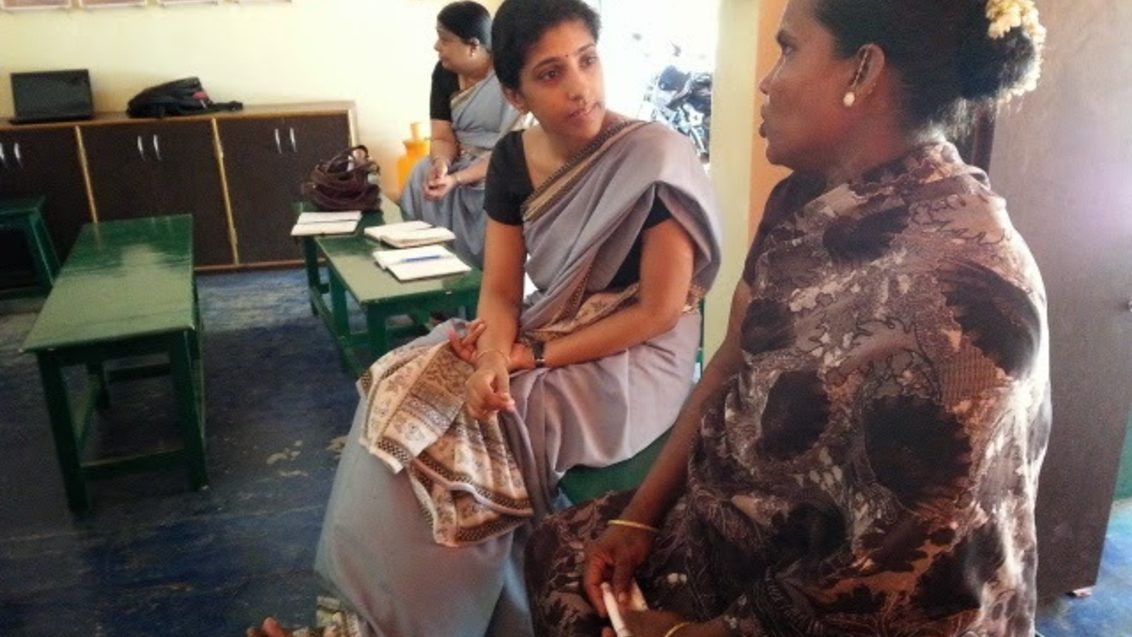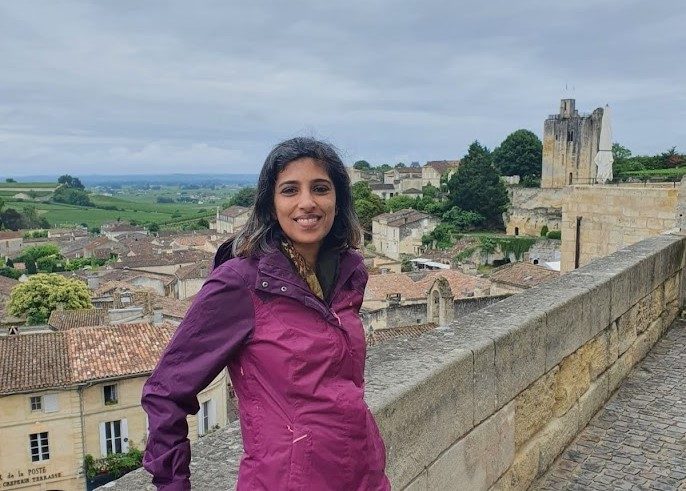“I was drawn here by smallholder impact”

Bindu Ananth is the most recent expert to join our Board. We asked Bindu about her impression of us, the ins and outs of micro-finance, and recipes for her country’s agriculture.
Syngenta Foundation: What brought you from a background in Economics and work in health into the world of agriculture?
Bindu Ananth: In my work in financial services, I always focused on under-served markets and customer segments. Agricultural finance and financing smallholders have therefore been a big part of my work over the last two decades. For example, I had the honor of being in the ICICI Bank team that launched India’s first rainfall index insurance contract. The Indian university I attended, the Institute of Rural Management Anand, played a pivotal role in making the country self-sufficient in milk. The Institute’s solution was a smallholders’ cooperative model, as early as the 1970s. This background has been very influential in my journey as well.
You hold several boards and other posts. What encouraged you to join the Syngenta Foundation (SFSA) in particular?
I was drawn to its strong focus on smallholder impact. Compared to many foundations, SFSA’s close association with Syngenta also gives it a special ability to access talent and technology. All my interactions with the other Board members and SFSA employees gave me a clear sense of a mission-driven and ambitious team. Personally, I am also eager to learn more about climate-resilient agriculture and what it means for farming systems and lenders.
What have been the surprises at SFSA?
All positive ones so far! I am greatly impressed by the quality of the materials and the very productive meetings. I learn so much from my Board colleagues and the leadership team. Sadly, I have only managed to attend one Board meeting in person since I joined; the others have all been online. I’m greatly looking forward to visiting SFSA programs and meeting country staff.
What particular mark do you aim to make in your work on our Board?
Given my background, I would be eager to contribute to a long-term, ambitious strategy and work program on smallholder access to financial services.
As a member of several organizations: what are your top tips for time management?
I am still figuring this out! I often find myself working against deadlines. However, I do schedule everything on my calendar – including workout time. It’s visible to everyone on my team so that nothing gets dropped.
How would you briefly describe the work of your company, Dvara Trust?
Dvara catalyzes new business models in financial services. To date, we’ve incubated nine innovative companies. We believe that when finance is designed and delivered well, it can be transformational.
“Access to finance underpins other developmental goals”
Why is this work so important?
Access to finance underpins a lot of other developmental goals. It is also essential to give people better tools to manage risk. They can then lead their best lives without worrying about rainfall failure or the hospitalization of a loved one. The market conventionally gravitates towards models with near-term returns and low uncertainty. There is a need for a set of entrepreneurs who are steeped in the context of low-income households, thinking about long-term impact, and not scared of taking on deeply entrenched problems. This is where we’d like to see Dvara play a strong role.
Micro-finance has had its ups and downs, not least in its public image. What common misconceptions about micro-finance need correcting?
The most common misconception is that one has to view and measure micro-finance through an entrepreneurial lens – as if it were all about creating new businesses among low-income households. Impact evaluations over the years tell us a different story. They show that micro-finance acts as a ‘forced savings’ device. It helps families access lump sums that would otherwise be challenging for them. Micro-finance structure and design are not consistent with entrepreneurial outcomes. We need a broad range of credit products to serve the various needs of low-income families. Micro-finance is one of many. Others include products involving larger amounts, longer tenure, and flexible repayment options.
You have received numerous honors and awards. Which has given you the greatest pleasure and why?I received an award from my program at Harvard during graduation 15 years ago. The Raymond Vernon Prize goes to the graduate most likely to make strong contributions and lead in international development. That vote of confidence from my peers and faculty meant a lot to me. I hope to continue to live up to that.
“India should phase out incentives that perpetuate subsistence farming”
Indian politicians and officials clearly listen to you. Which top priorities would you advise them to pursue in strengthening the country’s agriculture?
This is a complex issue and has many threads. We continue to grapple with very fragmented holdings and consequently low levels of farm automation and productivity. Too many people depend on subsistence farming, propped up by subsidies and price guarantees. In my view, the absence of social safety nets further contributes to the persistence of subsistence farming. Over time, we will need to enable the large base of farming households to either graduate to commercial agriculture or exit to profitable non-farm opportunities.
How would that work in practice?
We can’t force redeployment. Instead, we should enable a transition by dealing with the barriers I’ve just mentioned. We need to systematically phase out incentives that perpetuate subsistence farming. We should also address the lack of safety nets. As India grows richer and increases its tax pool, I believe we should invest in some version of universal basic income for the subsistence farming community. That would help make this transition just one. India also needs to build deep and liquid markets to manage commodity price risks. This would involve spot, futures, and options contracts as well as weather risk management through index insurance contracts. The country should also invest more in R&D designed to build climate resilience in our value chains**.
If you personally had a million dollars to invest, how would you use them to the greatest advantage of smallholders?
I would contribute half to SFSA. With the other half, I’d guarantee a local credit program for smallholders that would leverage my funds at least five times.
What, when you have any, do you most like doing in your leisure time?
I love reading literary fiction, especially with immigrant storylines. I’ve just finished reading Abdi Nor Iftin's “Call me American”, a memoir set against the backdrop of the Somalian war years.

Bindu Ananth is the co-founder and Chair of Dvara Trust. She is currently focused on innovations in health financing. She chaired Northern Arc Capital from 2009-18 and previously worked at ICICI Bank. Bindu served on three Reserve Bank of India policy committees, the Government of Tamil Nadu’s MSME Revival Committee, and the Government of India’s High-Level Committee on Women. In 2017, Forbes magazine featured her as one of India’s leading women.
India is not the only country that arguably needs to reprioritize its agricultural R&D. Our Policy team recently examined options in Indonesia, China and Nigeria. In 2017, it also provided advice on “supporting Indian farms the smart way”.
